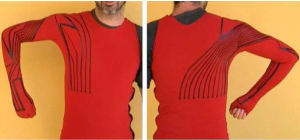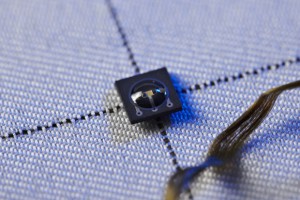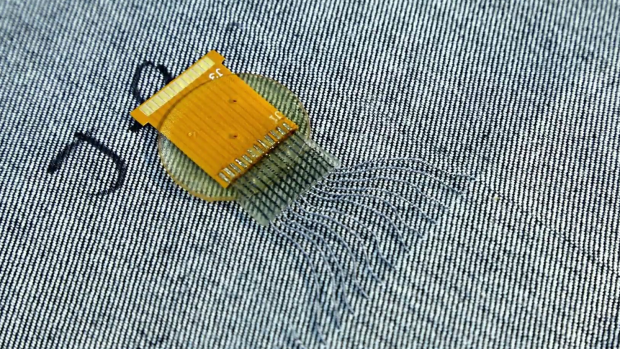Wearable Kinesthetic Systems, Alessandro Tognetti, Federico Lorussi, Mario Tesconi, Raphael Bartalesi, Giuseppe Zupone, Danilo De Rossi (2005)
“This paper deals with the design, the development and the realization of sensing garments, from the characterization of innovative comfortable and spreadable sensors to the methodologies employed to gather information on posture and movement.”
The report was about developing a wearable kinesthetic system for capturing and classifying body posture and gesture.
It started with the relevance of body kinematics monitoring technology in several biological disciplines and applications like rehabilitation monitoring. Some drawbacks of the conventional technologies were then mentioned. For example, the clumsy mechanical plug and wires of traditional sensors may bound human movements.

Two types of sensorized garments based on conductive elastomer (CE) sensors were created: an Upper Limb Kinesthetic Garment (ULKG) and a Sensing Glove. The piezoresistive properties of CE sensors made it possible to obtain a sensing fabric which could then be used to manufacture garments capable of monitoring human movements.
The process to obtain the fabric was rather technical. Refer to the link for more details. http://www.ncbi.nlm.nih.gov/pmc/articles/PMC1079930/
The report then further described the prototypes of ULKG and sensing glove and their electrical models and data acquisition techniques. At the end of the report, it evaluated the performances of both garments. The results turned out to be quite accurate.
In this work, the garment’s wearability was placed with priority, which led to its advantage over the traditional monitoring wearables.
Wearable Electronics and Smart Textiles: A Critical Review, Matteo Stoppa and Alessandro Chiolerio (2014)
“This review focuses on recent advances in the field of Smart Textiles and pays particular attention to the materials and their manufacturing process. Each technique shows advantages and disadvantages and our aim is to highlight a possible trade off between flexibility, ergonomics, low power consumption, integration and eventually autonomy.”
The review started with an introduction of smart textiles. It described the convergence of electronics and textiles into fabrics which were able to sense, compute, communicate and actuate. More attention was devoted to the materials and methodologies to develop smart textiles. Each scientific approach was followed by a review of the related work carried out by companies, universities or research institutes.

It discussed fabrication techniques like conductive fibers and conductive inks. These conductive materials could be used as sensors due to their electrical properties. Other types of sensors like stretch sensors and pressure sensors were mentioned, too.
Each method presented has a very specific feature such as conductivity, flexibility, biocompatibility, mechanical resistance and washability. With only a few approaches able to satisfy all these requirements at the same time, trade off often exists.
The review concluded with a vision of future wearables. The final key factor for user acceptance of wearable systems is the fit comfort.

